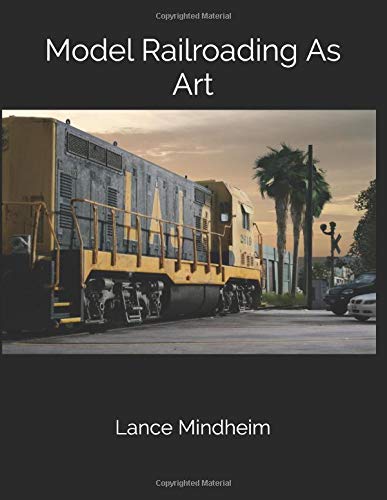
Wikipedia: Art is a diverse range of human activities in creating visual, auditory or performing artifacts (artworks), expressing the author’s imaginative, conceptual ideas, or technical skill, intended to be appreciated for their beauty or emotional power.
A friend of mine has the opportunity to visit a lot of layouts, and one N-scale club layout he visited is located in the midst of an artist’s colony of sorts. Interestingly, after public open-houses, the artists usually congregate at the N-scale layout. Why? In their view, the layout is art:
- It is multi-media.
- It is 3-dimensional.
- It is kinetic.
- It evokes memories and thought.
In my view, the artistic side of model railroading has generally gotten short shrift. In large part, this is likely due to the origins of the hobby being rooted in technical craftsmanship, rather than artistic vision. Also, the hobby tends to attract more left-brain personality types, who in turn prefer more technical/analytical topics that lend themselves to tidy articles in the hobby press.
However, with the increasing numbers of highly-detailed ready-to-run rolling stock on the market (How much detail does a boxcar model need, really?), the incredible extent and variety of scenic materials available, and the creative ferment provided by social media like YouTube, I think the hobby is headed for a major sea-change in direction and outlook towards the artistic becoming co-equal with the technical. Witness the beautiful weathered cars on The Weathering Shop’s webpage, for just one of many examples now “out there”. (www.theweatheringshop.com) The cars shown there are amazing in both the artistic AND technical sense.
Lance Mindheim’s new book, “Model Railroading as Art”, is part of the vanguard of this potential coming change. Mr. Mindheim is already a pioneer in designing small, room-sized, almost minimalist artistic layouts. He also has developed many revolutionary modeling techniques, such as building structures using photographs laminated to basic shells.
“Model Railroading as Art” is ground-breaking in a number of ways, and perversely I think the average model railroader will thereby be disappointed by it for the following reasons:
- It is not a book filled with pretty pictures of model railroads, a la Kalmbach’s “Great Model Railroads”, though the production values (including the photos) are very good.
- It is not really a “how-to” book with step-by-step guides on scenery, model photography, or any other technical model railroading subject, though there are many how-to-do-it sidebars throughout.
- It is not a book trying to sell product, I.E. “Cool scene! Where can I buy that kit?” In fact, the author decries the “more is better” approach to model railroading, and continually emphasizes the use of “negative space” when designing model scenes. I doubt an author telling people NOT to buy so much stuff will find popularity in the mainstream model press, who of course must answer to advertisers, who want to sell MORE stuff.
However, I believe anyone striving to create something more than an “average model railroad” will find it extremely useful.
The book is:
- A guide to scene composition when placing structures and other scenic elements.
- A primer on the use of negative space when composing scenes.
- A guide to the use of light, shadows, and color and how those relate to scene composition.
- A guide to the selective use of details within model railroad scenes.
In short, Mindheim’s book is a distillation of many concepts of what constitutes “art”, into a format applicable to model railroading. I think it would be especially valuable when planning a new layout, or even a smaller module, and thus I believe it deserves a place in any model railroader’s reference library, right alongside more technically oriented books on track planning, wiring, DCC, etc.
An excellent summary of what I also feel is a very good book. Lance as you say isn’t giving us the step A to b, etc… but has us thinking.
Tom
I’m only 25% through with reading it but already wish that this book was available even 5-10 years ago because I would have changed just about everything that I am doing in model railroading. I am proud (and receive lots of complements) of what I have accomplished on my oversized door layout but now look at it as disjointed with too many extreme colors and no thoughtful uniform approach. The book challenges you to think big picture rather than building by building. It is quite a remarkable approach and well worth reading.